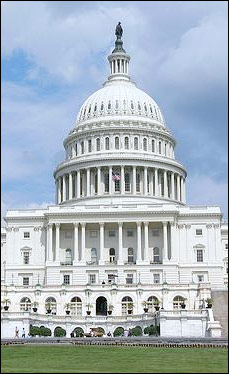The Indiana Democratic Senate campaign of Rep. Joe Donnelly released its internal Global Strategy Group poll (Oct. 28-30; 600 likely Indiana voters) that posts their man to a 43-36-9 percent advantage over Republican Richard Mourdock. The latter number is going to Libertarian Party candidate Andrew Horning. Mourdock countered by making his internal data public, a poll that claims his deficit is only one point. But even this latter margin is a reduction in support for the reeling Republican as a rape-related abortion comment in the final candidates’ debate could prove to be the deciding factor.
Republican gubernatorial nominee Rep. Mike Pence probably confirms Donnelly’s lead with his latest actions. Though releasing positive numbers for his own campaign and that of the presidential contest, the Pence team remained mum on the Senate race, leading to speculation that their internal data also shows Donnelly leading.
Taking Indiana would be a huge boon to the Democrats and will go a long way toward achieving their goal of holding the Senate majority.
In two western states, however, the GOP trend may be improving.
The National Mining Association, through their continuing Count on Coal campaign, launched an attack against Montana Democratic Sen. Jon Tester. The group goes so far as to say that Tester has joined Pres. Barack Obama’s “war on coal” for not supporting the coalition efforts and for his backing of federal regulations that have largely undermined the state’s coal production operations. Along with the Democratic gubernatorial nominee, Tester has refused to sign onto the Montana coal petition that pledges to protect the industry. Despite being a place of just under one million inhabitants, Montana ranks fifth in the nation in coal production, producing slightly under 45 million tons in its apex year of 2010.
Republican Denny Rehberg signed the pledge, as have most other candidates throughout the state, and the coal group is trying to make this issue the deciding factor of the campaign. In a race that has polled even for months, one coalition group heavily promoting a critical issue position could have a major effect. Energy issues are making an impact in races across the country, especially in the West.
Conflicting polls are now coming from New Mexico. Rep. Martin Heinrich, the Democratic nominee, released his internal GBA Strategy numbers (Oct. 27-29; 600 likely New Mexico voters) that again places him 10 points ahead of former Republican congresswoman Heather Wilson. But, earlier this week, Wilson countered with her own Public Opinion Strategies survey (Oct. 21-22; 500 likely New Mexico voters) that showed her topping Heinrich, 44-43 percent in this case, for the first time in the campaign.
Heinrich’s numbers have held for most of the election cycle, and he has been in stronger position than one would have guessed running against a Republican former representative who proved she could win repeatedly in Democratic regions. If her earlier POS data is correct, it might signal that her campaign could be peaking at the right time and become the Republican sleeper race that many people suggested it might be earlier in the year.
Overall, however, the Democrats look to be in the more favorable position than Republicans in Massachusetts, Virginia, Florida, Ohio, Pennsylvania and Wisconsin. The GOP is likely to convert Nebraska, and is trending more positively in North Dakota. With the likely loss of the Maine seat to Independent Angus King, the Republicans could be trading two of their current seats for two others, but this still leaves them four short of majority status.
If Indiana and Montana cancel each other from a party division perspective, and Elizabeth Warren unseats Republican Sen. Scott Brown in Massachusetts, the Democrats could actually end the night breaking even, or losing fewer than the four seats than the GOP needs to snatch away the majority. Democrats are protecting 23 seats in this cycle as compared to the Republicans’ 10, thus giving the GOP many offensive opportunities. But their early positive momentum has definitely stalled.








